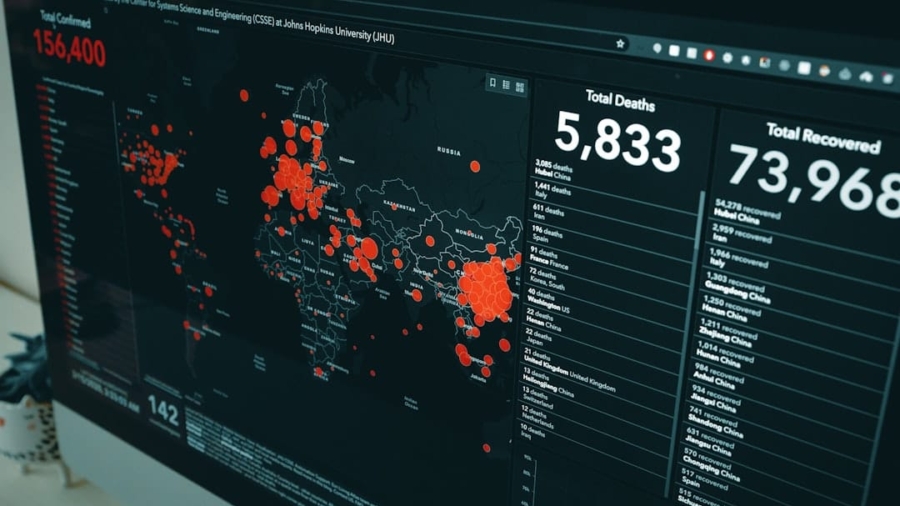In recent years, the intersection of artificial intelligence (AI) and environmental science has garnered significant attention, particularly in the realm of environmental risk assessment. These AI-powered tools are designed to analyze vast amounts of data, identify potential environmental hazards, and predict the impacts of various activities on ecosystems and human health. As the world grapples with climate change, pollution, and biodiversity loss, the need for effective risk assessment methodologies has never been more pressing.
Traditional approaches often struggle with the complexity and scale of environmental data, leading to delays in decision-making and inadequate responses to emerging threats. AI technologies offer a promising alternative, enabling more accurate and timely assessments that can inform policy and management strategies. The integration of AI into environmental risk assessment is not merely a technological advancement; it represents a paradigm shift in how we understand and respond to environmental challenges.
By leveraging machine learning algorithms, natural language processing, and big data analytics, these tools can uncover patterns and correlations that may be invisible to human analysts. This capability is particularly crucial in an era where environmental issues are increasingly interconnected and multifaceted. For instance, the impact of industrial activities on air quality can have cascading effects on public health, biodiversity, and climate change.
AI-powered tools can synthesize information from diverse sources, providing a holistic view of risks and facilitating more informed decision-making.
Key Takeaways
- AI-powered environmental risk assessment tools are revolutionizing the way we evaluate and manage environmental risks.
- Current challenges in environmental risk assessment include data complexity, limited resources, and the need for more accurate and timely assessments.
- AI plays a crucial role in environmental risk assessment by analyzing large and complex datasets, identifying patterns, and making predictions to support decision-making.
- The advantages of AI-powered environmental risk assessment tools include improved accuracy, efficiency, and the ability to handle large volumes of data.
- Potential applications of AI in environmental risk assessment include pollution monitoring, climate change impact assessment, and natural disaster risk prediction.
Current Challenges in Environmental Risk Assessment
Despite the advancements in technology, environmental risk assessment remains fraught with challenges. One of the primary obstacles is the sheer volume and complexity of data that must be analyzed. Environmental data is often heterogeneous, coming from various sources such as satellite imagery, sensor networks, and historical records.
This diversity can complicate data integration and analysis, leading to gaps in understanding and potential misinterpretations of risk. Furthermore, traditional risk assessment methodologies often rely on static models that may not adequately capture dynamic environmental processes or the interactions between different ecological components. Another significant challenge is the uncertainty inherent in environmental systems.
Many factors influencing environmental risks are unpredictable or poorly understood, such as climate variability, species interactions, and human behavior. This uncertainty can lead to conservative estimates that may underestimate risks or overly cautious approaches that hinder development and innovation. Additionally, regulatory frameworks often lag behind scientific advancements, creating a disconnect between the latest research findings and their application in policy-making.
This gap can result in outdated assessments that fail to address current realities or emerging threats.
The Role of AI in Environmental Risk Assessment
AI plays a transformative role in addressing these challenges by enhancing data processing capabilities and improving predictive accuracy. Machine learning algorithms can analyze large datasets more efficiently than traditional methods, identifying patterns and trends that inform risk assessments. For example, AI can process satellite imagery to monitor deforestation rates or track changes in land use over time, providing critical insights into habitat loss and its implications for biodiversity.
By automating data analysis, AI reduces the time required for assessments and allows scientists to focus on interpreting results and developing mitigation strategies. Moreover, AI’s ability to learn from new data continuously enables adaptive risk assessment approaches. As more information becomes available—whether through ongoing monitoring or new research findings—AI systems can update their models accordingly.
This adaptability is particularly valuable in rapidly changing environments where conditions may shift due to climate change or human activities. For instance, AI can help predict how rising temperatures might affect species distributions or how urbanization impacts local water quality. By incorporating real-time data into assessments, AI tools can provide more accurate forecasts and support proactive management decisions.
Advantages of AI-Powered Environmental Risk Assessment Tools
The advantages of AI-powered environmental risk assessment tools are manifold. One of the most significant benefits is their ability to enhance accuracy and precision in risk evaluations. Traditional methods often rely on simplified models that may overlook critical variables or interactions within ecosystems.
In contrast, AI algorithms can analyze complex datasets with numerous variables, leading to more nuanced insights into potential risks. This increased accuracy is essential for informing policy decisions that affect public health and environmental sustainability. Additionally, AI tools can facilitate greater stakeholder engagement by making complex data more accessible and understandable.
Visualization techniques powered by AI can transform intricate datasets into intuitive graphics that convey key information effectively. For example, interactive maps can illustrate pollution hotspots or areas at risk of flooding, allowing communities to grasp the implications of environmental risks more readily. By democratizing access to information, AI fosters informed public discourse and encourages collaborative efforts to address environmental challenges.
Potential Applications of AI in Environmental Risk Assessment
The potential applications of AI in environmental risk assessment are vast and varied. One prominent area is climate change modeling, where AI can enhance predictions related to temperature changes, precipitation patterns, and extreme weather events. By analyzing historical climate data alongside socio-economic factors, AI models can forecast future scenarios that inform adaptation strategies for vulnerable communities.
For instance, machine learning algorithms have been employed to predict the likelihood of flooding in urban areas based on rainfall patterns and land use changes. Another significant application lies in biodiversity conservation. AI-powered tools can assist in assessing the risks faced by endangered species by analyzing habitat loss, climate impacts, and human encroachment.
For example, researchers have utilized AI to analyze acoustic data from forests to monitor bird populations and detect changes in their behavior due to habitat degradation. Such insights enable conservationists to prioritize areas for protection and develop targeted interventions to mitigate risks.
Ethical and Regulatory Considerations for AI-Powered Environmental Risk Assessment Tools
As with any technological advancement, the deployment of AI-powered environmental risk assessment tools raises important ethical and regulatory considerations. One primary concern is the potential for bias in AI algorithms, which can arise from the data used to train these systems. If historical data reflects systemic inequalities or biases—such as disproportionate impacts on marginalized communities—AI models may inadvertently perpetuate these disparities in their assessments.
Ensuring fairness and equity in AI applications requires careful scrutiny of training datasets and ongoing monitoring of algorithmic outputs. Moreover, transparency in AI decision-making processes is crucial for building trust among stakeholders. Environmental risk assessments often have significant implications for communities, industries, and ecosystems; therefore, stakeholders must understand how AI-generated conclusions are reached.
Regulatory frameworks should mandate transparency standards that require organizations to disclose the methodologies used in their assessments and provide clear explanations of how AI tools contribute to decision-making processes.
The Future of AI-Powered Environmental Risk Assessment Tools
Looking ahead, the future of AI-powered environmental risk assessment tools appears promising yet complex. As technology continues to evolve, we can expect advancements in algorithmic capabilities that enhance predictive accuracy and expand the range of applications. For instance, integrating AI with emerging technologies such as blockchain could improve data integrity and traceability in environmental assessments.
Furthermore, interdisciplinary collaboration will be essential for maximizing the potential of AI in environmental risk assessment. Engaging experts from diverse fields—such as ecology, computer science, social sciences, and policy—can foster innovative approaches that address multifaceted environmental challenges.
Collaborative efforts can lead to the development of comprehensive frameworks that integrate AI insights into broader sustainability initiatives while ensuring ethical considerations are prioritized.
The Impact of AI on Environmental Risk Assessment
The integration of artificial intelligence into environmental risk assessment represents a significant leap forward in our ability to understand and manage complex ecological systems. By harnessing the power of data analytics and machine learning, these tools offer enhanced accuracy, efficiency, and adaptability in evaluating environmental risks. As we confront pressing global challenges such as climate change and biodiversity loss, the role of AI will only become more critical in shaping effective responses.
However, it is imperative that we navigate the ethical landscape surrounding these technologies with care. Ensuring fairness, transparency, and accountability will be essential for building trust among stakeholders and fostering equitable outcomes in environmental management. As we look toward the future, continued innovation combined with responsible practices will be key to unlocking the full potential of AI-powered environmental risk assessment tools in safeguarding our planet for generations to come.
In a related article discussing the potential of AI in customer interactions, SmartSender is highlighted as a chatbot platform that enables seamless communication with customers. This technology could be integrated into AI-powered environmental risk assessment tools to enhance user experience and provide more efficient solutions. To learn more about SmartSender and its capabilities, check out this article.
FAQs
What are AI-powered environmental risk assessment tools?
AI-powered environmental risk assessment tools are software applications that use artificial intelligence and machine learning algorithms to analyze and predict potential environmental risks and their impact on ecosystems, human health, and the economy. These tools can process large amounts of data from various sources to provide insights and recommendations for mitigating environmental risks.
How do AI-powered environmental risk assessment tools work?
AI-powered environmental risk assessment tools work by collecting and analyzing data from sources such as satellite imagery, sensor networks, weather forecasts, and historical environmental data. Machine learning algorithms are then used to identify patterns, trends, and potential risks, and to make predictions about future environmental conditions and their impact.
What are the benefits of using AI-powered environmental risk assessment tools?
Some of the benefits of using AI-powered environmental risk assessment tools include improved accuracy and efficiency in identifying and predicting environmental risks, the ability to process and analyze large amounts of data in real time, and the potential to support better decision-making for environmental management and policy development.
What are some examples of AI-powered environmental risk assessment tools?
Examples of AI-powered environmental risk assessment tools include software applications that can predict the impact of climate change on specific regions, tools that analyze the potential risks of industrial activities on local ecosystems, and platforms that assess the environmental impact of urban development projects.
What are the challenges of using AI-powered environmental risk assessment tools?
Challenges of using AI-powered environmental risk assessment tools include the need for high-quality and reliable data inputs, the potential for biases in the algorithms and data sources used, and the requirement for expertise in interpreting and acting on the insights provided by these tools. Additionally, there may be concerns about the ethical and social implications of relying on AI for environmental risk assessment.



